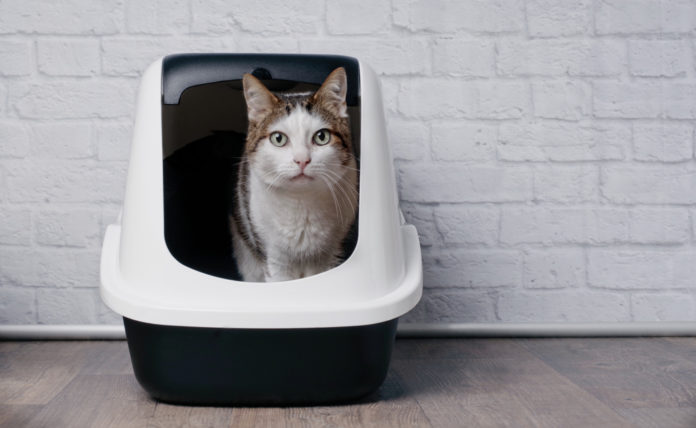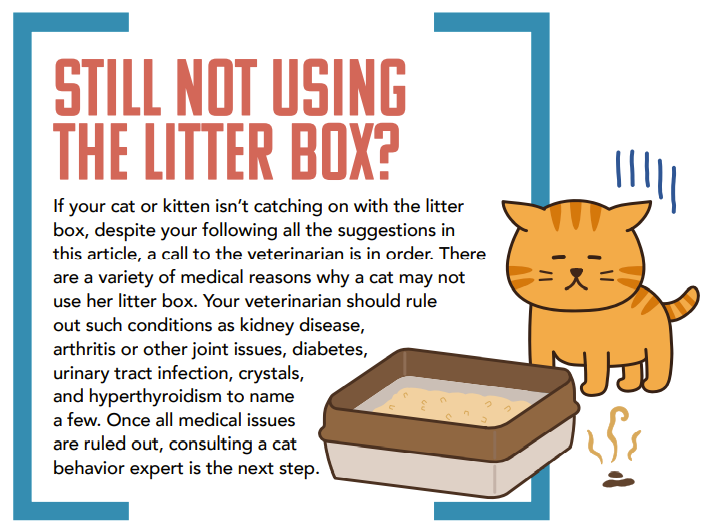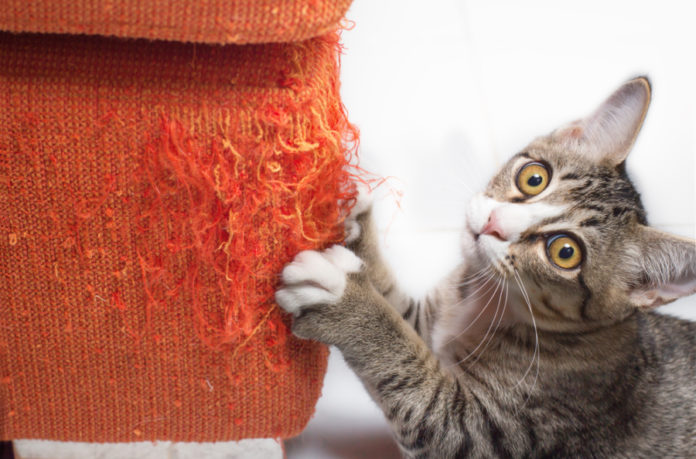4 steps to litter-training your cat

Successfully litter-training your new cat or kitten involves several important steps, from choosing the right litter box, to making sure you keep it clean.
Adopting a cat or kitten? Before you bring your new friend home, make sure you have a litter box strategy in place so you can help ensure the training process goes as smoothly as possible. Litter box issues are one of the biggest behavioral problems seen by veterinarians and cat specialists, but by properly preparing your kitty’s potty area before her arrival, you can set her up for success. This article will help your new feline friend take to her litter box with no stress or mess.
Step #1: Choose the right litter box
- Open, low, and large tends to be the design that most cats prefer. Litter boxes that have high sides can be a challenge for kittens or senior cats. If you are considering a litter box with high sides, ensure the entrance is low to allow easy access for your cat.
- Litter boxes are often too much on the small size. Ideally, your cat’s litter box should be one-and-a-half times the length of the cat. You want her to have plenty of room to move around, and without having to pop her butt out of the box. Believe it or not, litter boxes designed for dogs can be a great idea for your cat. They tend to be large, shallow, and not too tall. Plastic storage containers and bins are other options, but again, make sure the sides aren’t too high for your cat or kitten.
- Although we may prefer covered litter boxes, they can make many cats feel trapped. In addition, when your cat starts digging around and doing her business, the smell and dust can generate an unhealthy environment for her. Choosing a litter box without a cover is physically better and likely less stressful for many kitties.
- Self-cleaning litter boxes may sound like a good idea, but the noise the scooping mechanism makes right after your cat leaves it can be scary to her. She may even find it so off-putting that she chooses to avoid the litter box altogether. I also personally find self-cleaning litter boxes dirty because the poo just gets trapped in the claws of the machine.
Step #2: Place the litter box in a good location
- Your cat’s litter box should be placed in a spot that is quiet and away from high-traffic areas, but is also quick and easy to access. Avoid a loud laundry room, or any other place that can be noisy. A location that is clean and nicely lit is also preferred. Kittens are easily distracted, and you don’t want to choose a spot that is cluttered and may distract your cat from her potty objective.
- Privacy is king. When your cat goes to use or investigate her litter box, you may be tempted to hover over her. Instead, look away and give her the privacy she needs. This also goes for any children in the house as well as any other pets.
- Toilets do not belong in dining rooms or kitchens. Not only do we not want her litter box there – but she doesn’t either. Nobody wants to eat where they poop, so don’t place your cat’s litter box near her food, water, or even her sleeping area.
- The rule of thumb is one litter box for every cat in the house, plus an extra. If you have one cat, two litter boxes are ideal. If you have multiple floors, locate a litter box on each level.
 Step #3: Decide on a cat litter
Step #3: Decide on a cat litter
- My first suggestion is to start with the litter your new cat or kitten is accustomed to using. Ask the shelter or rescue group which type and brand they were using. If they are willing to send you home with a little used litter, that’s even better. It may seem odd, but placing some of the cat’s used litter on top of the new litter will encourage her to use the box. It tells her, that this spot is her toilet.
- Keep in mind that your starting litter choice may not be your final selection, depending on what the shelter was using. Once you find your cat is using her litter box, you can slowly transition the litter type to a more natural product by mixing them half-and-half, and adding the new litter to the old until you’re using the natural product.
- If your cat is a stray, starting with two litter types is a great idea — one type in one box, the other in the second. Think about where she was living before she came to you. Was she likely eliminating in loose dirt? Sand? Stones? Try to find a litter with a similar texture. The depth of litter is also important to cats. Typically, they prefer about two inches.
- It’s important to remember that kittens investigate their environment through their mouths, so make sure she’s not eating any clumping litter. If you notice her playing with her litter, just make a smooching noise and toss a few of her toys around to attract her attention.
Step #4: Keep the litter box clean
- Scoop your cat’s litter at least once a day. She won’t like a dirty bathroom any more than you would. Not only will keeping the litter box clean encourage her to use it, but it’ll also help keep your home clean since she won’t be tracking urine or excrement around the house.
- Regularly changing all the litter in the box is also important. How often you need to do this depends on the litter you choose, and your personal preference. A clean litter box should be odor-free. For a one-cat family, daily scooping and weekly litter changes tend to work well. When you change out the litter, clean the box with soap and water. If the litter box ever gets to a point where it isn’t cleaning properly, toss it out and purchase a new one.
A cat is a lifetime commitment and she will bring much joy into your life. Remember to keep her litter box accessible, quiet, and clean.




